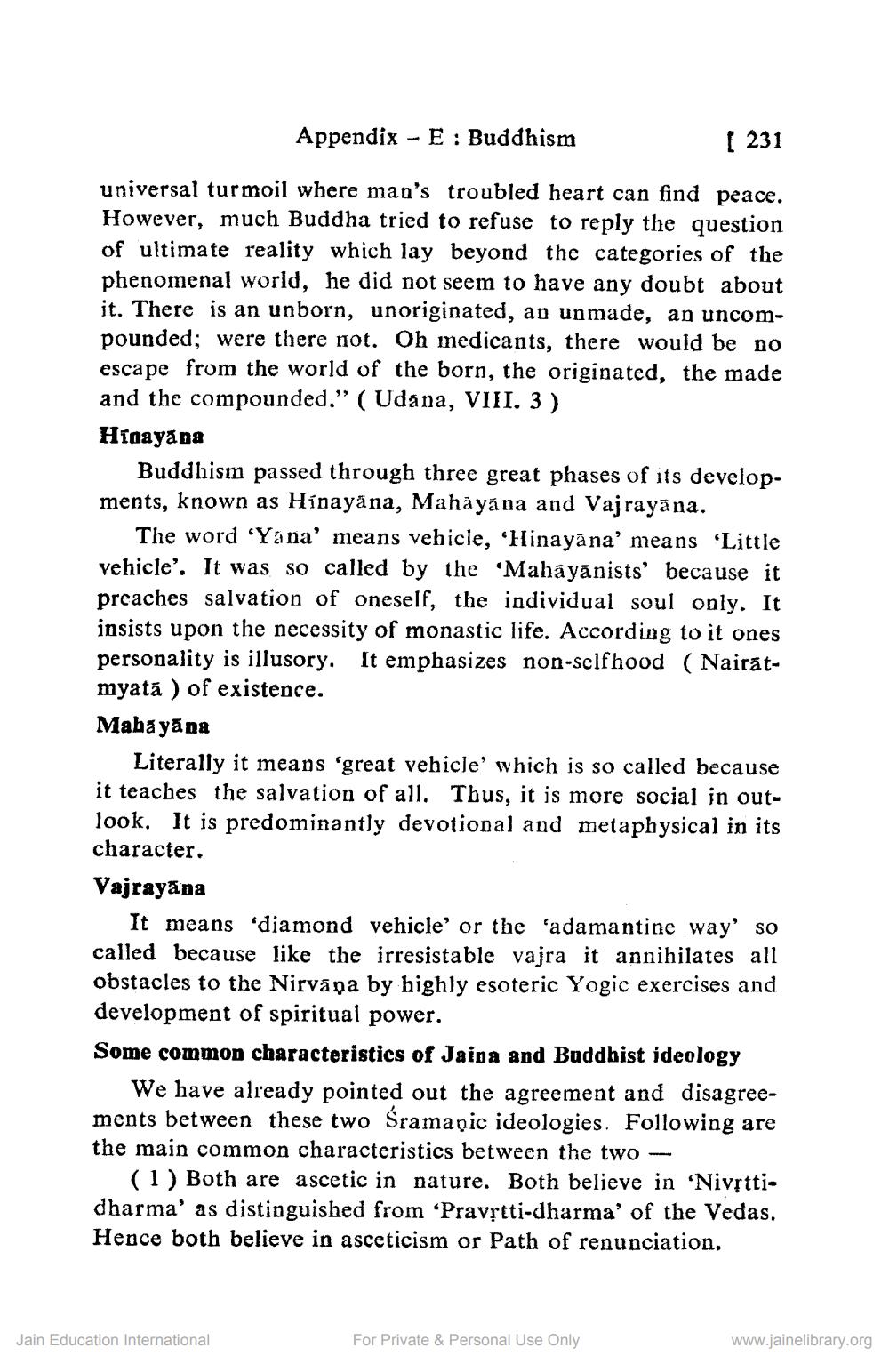________________
Appendix - E : Buddhism
[ 231
universal turmoil where man's troubled heart can find peace. However, much Buddha tried to refuse to reply the question of ultimate reality which lay beyond the categories of the phenomenal world, he did not seem to have any doubt about it. There is an unborn, unoriginated, an unmade, an uncompounded; were there not. Oh medicants, there would be no escape from the world of the born, the originated, the made and the compounded." ( Udana, VIII. 3) Hígayana
Buddhism passed through three great phases of its developments, known as Hínayana, Mahāyāna and Vajrayāna.
The word 'Yana' means vehicle, 'Hinayāna' means 'Little vehicle'. It was so called by the 'Mahāyānists' because it preaches salvation of oneself, the individual soul only. It insists upon the necessity of monastic life. According to it ones personality is illusory. It emphasizes non-selfhood ( Nairátmyată ) of existence. Maba yana
Literally it means 'great vehicle which is so called because it teaches the salvation of all. Thus, it is more social in outlook. It is predominantly devotional and metaphysical in its character. Vajrayāna
It means diamond vehicle' or the 'adamantine way' so called because like the irresistable vajra it annihilates all obstacles to the Nirvāpa by highly esoteric Yogic exercises and development of spiritual power. Some common characteristics of Jaipa and Buddhist ideology
We have already pointed out the agreement and disagreements between these two Śramanic ideologies. Following are the main common characteristics between the two -
(1) Both are ascetic in nature. Both believe in 'Nivșttidharma' as distinguished from ‘Pravịtti-dharma' of the Vedas. Hence both believe in asceticism or Path of renunciation.
Jain Education International
For Private & Personal Use Only
www.jainelibrary.org




